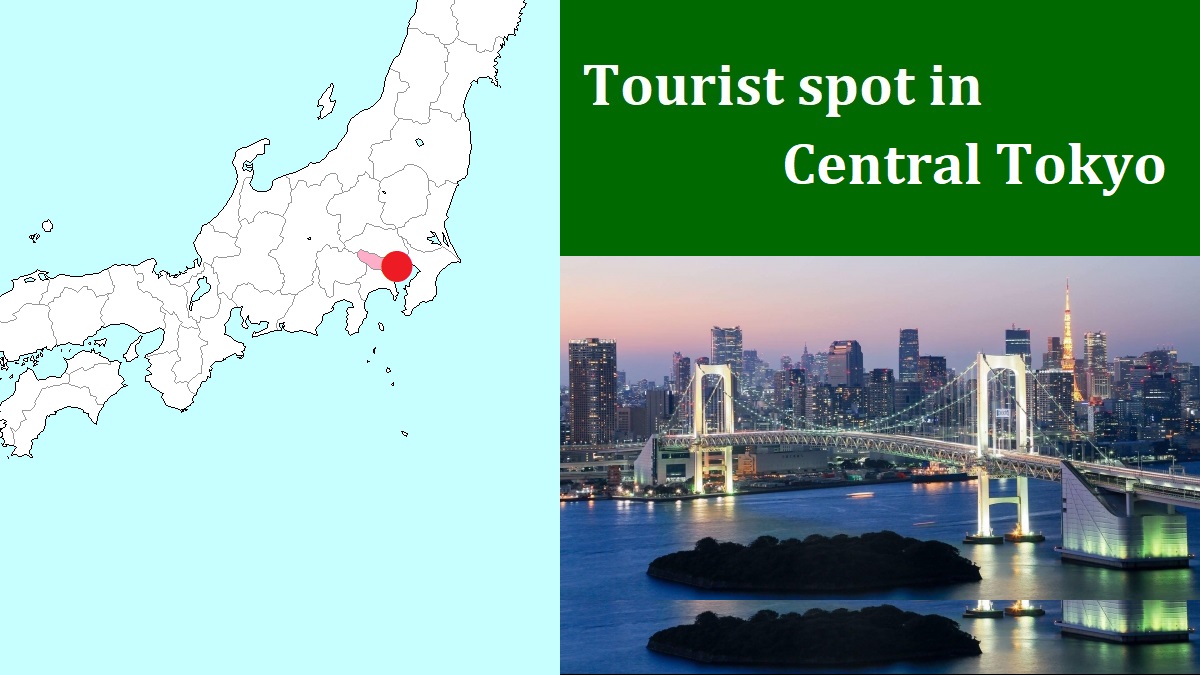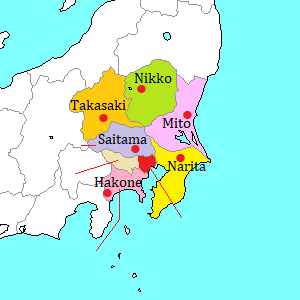Asakusa [浅草]
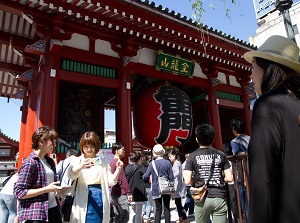
Kaminarimon in Asakusa
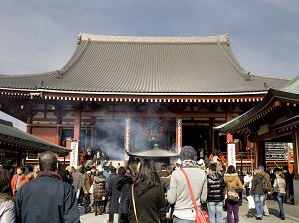
Main hall of Sensoji
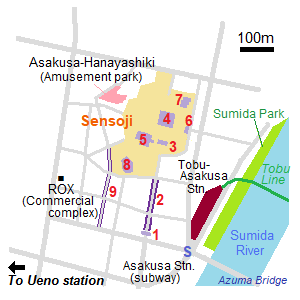
1) Kaminarimon 2) Nakamise street 3) Hôzômon
4) Main Hall of Sensôji 5) Five-story pagoda
6) Nitenmon 7) Asakusa Shrine 8) Denpo-in
9) Hoppy Street
Asakusa is the area located about 2 km east of Ueno station.
And Sumida River flows just east of the area.
It is one of the most popular sightseeing spots in Tokyo, then many tourists from home and abroad visit here almost daily.
Originally, Asakusa has developed as the town of Sensoji temple (浅草寺).
("O" in the word is pronounced long, so it is read as "Sensôji".)
In 628, fisher's brothers found a small statue of the Goddess of Kannon in their fishing net at fish catching in Sumida River.
Then, their boss changed his residence to a temple and he enshrined the statue there.
This is said to be the origin of Sensôji.
The former buildings of Sensôji were built in the 17th century.
Many playhouses and comedy houses had opened in this area since the late 19th century.
So here became the entertainment district in Tokyo.
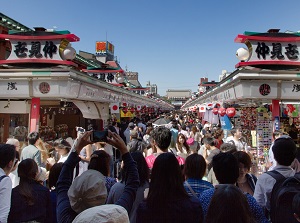
Crowded Nakamise Street
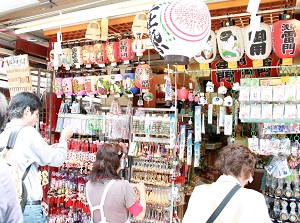
Souvenir shop in Nakamise
The Great Kanto Earthquake in 1923 and the World War II had damaged this town, but here had recovered strongly on each occasion.
Since 1960s, new downtowns such as Shinjuku and Shibuya have developed in Tokyo, so Asakusa has become an sightseeing town with the atmosphere of old Edo city.
The main sightseeing spot is Sensôji temple.
Asakusa is a temple town, so a lot of souvenir shops and restaurants are around the temple.
Of course, most of them sell Japanese traditional products and foods.
Kaminarimon gate (雷門)
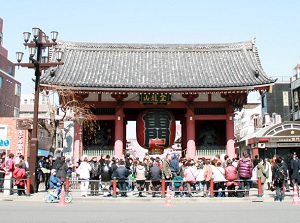
Kaminarimon in Asakusa
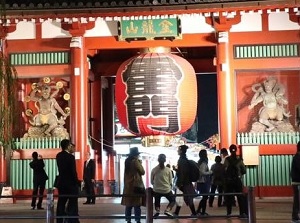
Big Chochin and two statues
Kaminarimon is the gate leading to Sensôji temple, and is the most popular landmark of Asakusa.
It is located about 400 meters south of the main hall of the temple, and it is the entrance of the approach of the temple.
It is said that the first gate was built in 942.
But this gate was often destroyed by fire, and it was rebuilt each time.
Current gate was rebuilt in 1960.
A big red chochin (Japanese paper lantern) with "Kaminarimon" in kanji character is hung in the center of the gate.
The weight is about 700 kilograms.
The meaning of "Kaminarimon" is "Thunder Gate".
In the right side of the gate, a statue of "God of Wind" stands.
And in the left side of the gate, a statue of "God of Thunder" stands.
They are the guardian gods protecting the temple from wind and flood damage.
Nakamise street (仲見世)
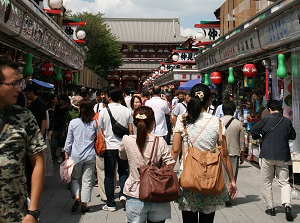
Nakamise street
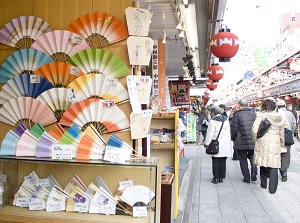
Souvenir shops in Nakamise
Nakamise is the approach between Kaminarimon and Sensôji temple, and the length is about 250 meters.
About 90 small shops line on both sides of the street.
These shops sell souvenirs, confectionery and other Japanese cultural goods.
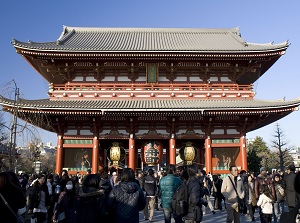
Hôzômon gate
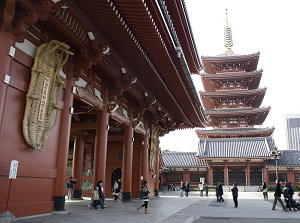
Big waraji on Hozomon & Five-story pagoda
Hôzômon gate (宝蔵門)
Hôzômon is a gate in the precincts, and is between the end of Nakamise street and the Main Hall of the temple.
"Hôzô" means the "storehouse of treasures", so the part of the second story is the storehouse of cultural assets of the temple.
A red chochin is hung in the center of the gate, and the statues of strong giant stand on the both sides of the gate.
A huge straw sandal ("Waraji" in Japanese) is hung on the reverse side of the gate.
It has been donated for the giant statues by a group in Yamagata Prefecture and is a talisman to ward off evil spirits.
Five-story pagoda (五重塔)
Five-story pagoda is located just west of Hôzômon gate.
The height is about 48 meters.
The original pagoda was built in 942, and the former pagoda had been rebuilt in 1648.
But, it was also destroyed in 1945, then current pagoda was built in 1973.
In the highest part of the pagoda, Buddha's ashes donated from the government of Sri Lanka is enshrined.
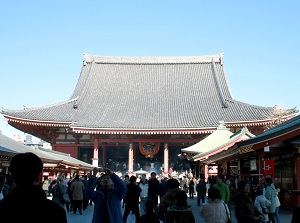
Main hall of Sensoji
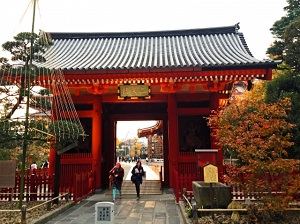
Nitenmon gate
Main Hall of Sensôji
It is the largest building of the temple at the center of the site.
The former building was built in 1649, but it was destroyed by the Tokyo air raids in 1945.
Current building was rebuilt in 1958.
Its main object of worship is a statue of the Goddess of Kannon.
But it is exposed only on December 13th every year.
The original statue found in 628 is enshrined in a room behind the exposed statue.
But it is never exposed to the public.
Nitenmon gate (二天門)
Nitenmon is the east gate of the temple.
It was built in 1618, fortunately, it escaped the damage of World War II.
Originally, this gate was built for Toshogu shrine in the site of the temple.
But the shrine was destroyed by fire in 1642, so it became a gate of Sensôji.
This gate is designated as a nationally important cultural property.
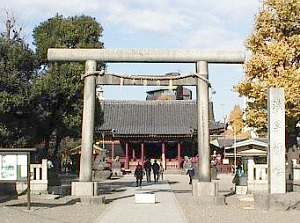
Asakusa Shrine
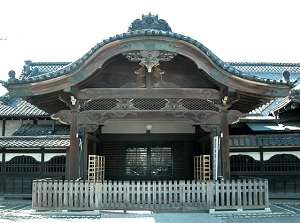
Denpo-in temple
Asakusa Shrine (浅草神社)
Asakusa Shrine is the Shinto shrine located north east of the Main Hall.
It was built in 1649.
It enshrines the three men, the fisher's brothers who found the statue of the Goddess of Kannon in 628 and their boss.
We speak of "three Gods" as "sanja" in Japanese.
So people call this shrine "Sanja-sama" affectionately.
And "Sanja Festival" of this shrine held on May 17th every year is one of the major festival in Tokyo.
Denpo-in temple (伝法院)
Denpo-in is a temple living the chief priest of Sensôji, and is located southwest part of Sensôji temple.
It was built in 1777, and has a Japanese garden about 1.3 hectares wide.
Unfortunately it is not opened to the public.
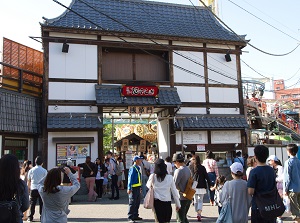
Entrance of Hanayashiki
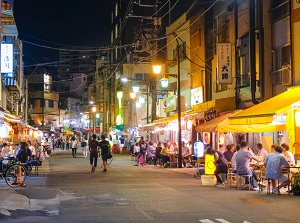
Hoppy Street
Asakusa Hanayashiki (浅草花やしき)
It is a small amusement park.
It is said that it was originally opened as flower garden in 1853, and became the amusement park in 1949.
Therefore, it is the oldest amusement park in Japan.
There are some Japanese-style attractions.
Hoppy Street (ホッピー通り)
It is a street with many pubs like street stand.
The street runs north and south for about 300 meters on the west side of Denpo-in temple.
Many of the pubs open from early afternoon.
Hoppy is a cheap and light carbonated drink containing alcohol like beer.
It is added to the drink menu.
Of course, various dishes are served, but Japanese stew of cow line meat is the standard dish for hoppy.
Sumida Park (隅田公園)
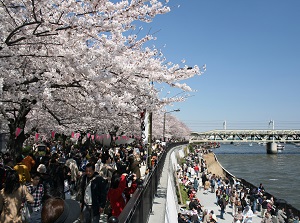
Cherry blossoms at Sumida Park
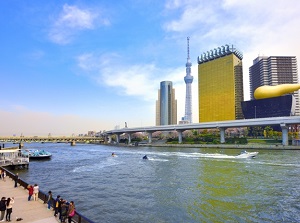
Sumida River, the pier and Tokyo Skytree
Sumida Park is located on the east side of Asakusa area and faces Sumida River.
There are about 700 cherry trees along Sumida River, and it is one of cherry blossom viewing spots of Tokyo in spring.
And, Sumida River Fireworks Festival is held around this park on the last Saturday in July.
There is Azuma Bridge (吾妻橋) at the south end of the park.
It is near Kaminarimon and the railway stations, and the cruising ships depart around the bridge.
Enjoying Japanese style in Asakusa
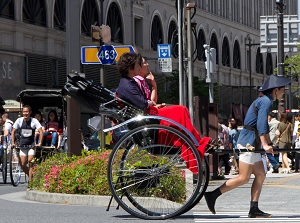
Sightseeing Rickshaw
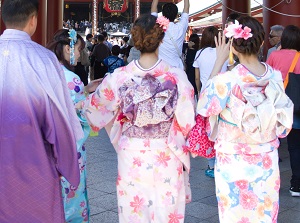
Young visitors wearing Kimono
If you want to walk wearing Kimono around Asakusa, there are some Kimono rental shops in Asakusa.
The followings have English website.
Both woman and man are OK in most shops.
And, there are some other events for foreign tourists.
How to get here
-
Nearest stations of subway.
Asakusa (●G19 Ginza Line, ●A18 Asakusa Line) - Get off at Tobu-Asakusa terminal station of Tobu Line.

